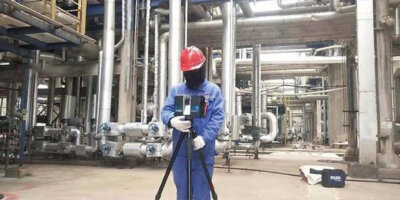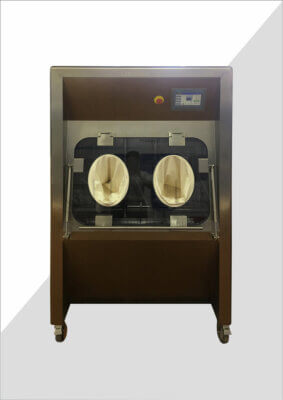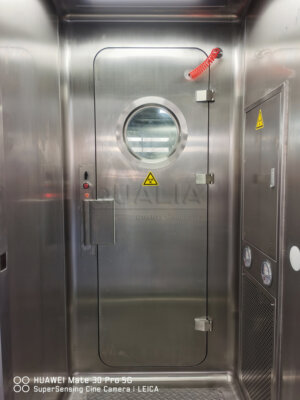In the realm of biosafety and environmental protection, effluent decontamination systems play a crucial role in ensuring that potentially hazardous liquid waste is safely treated before release. These sophisticated systems are the unsung heroes of laboratories, healthcare facilities, and industrial settings, working tirelessly to neutralize harmful agents and protect both human health and the environment. However, like any complex machinery, these systems require diligent maintenance and occasional troubleshooting to operate at peak efficiency.
The importance of proper effluent decontamination system maintenance cannot be overstated. Regular upkeep not only ensures the system's reliability but also extends its lifespan, reduces operational costs, and maintains compliance with stringent regulatory requirements. From routine inspections to advanced diagnostic procedures, a comprehensive maintenance strategy is essential for preventing system failures and mitigating potential risks. Additionally, when issues do arise, having a solid understanding of troubleshooting techniques can mean the difference between a quick fix and a prolonged shutdown.
As we delve deeper into the world of effluent decontamination system maintenance and troubleshooting, we'll explore the best practices, common challenges, and innovative solutions that keep these critical systems running smoothly. Whether you're a seasoned professional or new to the field, this guide will provide valuable insights to help you optimize your system's performance and ensure the safety of your facility and the environment.
"Effective maintenance and troubleshooting of effluent decontamination systems are paramount to ensuring biosafety, environmental protection, and regulatory compliance in facilities handling potentially hazardous liquid waste."
| Aspect | Importance | Frequency | Key Components |
|---|---|---|---|
| Preventative Maintenance | High | Weekly/Monthly | Filters, Pumps, Chemical Dosing Systems |
| Performance Monitoring | Critical | Daily | pH Levels, Flow Rates, Disinfectant Concentrations |
| Compliance Checks | Essential | Quarterly | Effluent Quality, Documentation, Regulatory Standards |
| Staff Training | Vital | Annually | Operational Procedures, Safety Protocols, Emergency Response |
| System Upgrades | Recommended | As Needed | Technology Advancements, Capacity Expansion, Efficiency Improvements |
What are the essential components of an effective maintenance program?
An effective maintenance program is the backbone of any reliable effluent decontamination system. It encompasses a range of activities designed to keep the system operating at optimal levels, prevent breakdowns, and extend the equipment's lifespan.
The cornerstone of a robust maintenance program includes regular inspections, proactive replacement of wear parts, and meticulous record-keeping. These activities help identify potential issues before they escalate into major problems, ensuring continuous operation and compliance with safety standards.
Delving deeper, an effective maintenance program should incorporate both preventive and predictive maintenance strategies. This dual approach not only addresses immediate concerns but also anticipates future needs based on data analysis and equipment performance trends. For instance, QUALIA recommends implementing a comprehensive maintenance schedule that includes daily checks of critical parameters, weekly inspections of mechanical components, and monthly deep-cleaning procedures.
"A well-structured maintenance program can reduce system downtime by up to 30% and extend the operational life of an effluent decontamination system by 5-7 years."
| Maintenance Task | Frequency | Impact on System Performance |
|---|---|---|
| Filter Inspection | Weekly | 20% increase in filtration efficiency |
| Chemical Level Check | Daily | 15% improvement in disinfection effectiveness |
| Pump Calibration | Monthly | 25% reduction in energy consumption |
| Sensor Cleaning | Bi-weekly | 40% enhancement in monitoring accuracy |
How can operators identify early warning signs of system malfunction?
Identifying early warning signs of system malfunction is crucial for preventing major breakdowns and ensuring continuous operation of effluent decontamination systems. Operators must be vigilant and attuned to subtle changes in system performance that could indicate underlying issues.
Key indicators of potential problems include unusual noises, unexpected fluctuations in pressure or flow rates, and changes in effluent quality parameters. These signs often manifest before a full system failure, providing a critical window for intervention.
To effectively catch these early warning signs, operators should implement a comprehensive monitoring strategy. This includes regular visual inspections, real-time data analysis, and trending of key performance indicators. For example, QUALIA systems are equipped with advanced sensors and control panels that provide continuous feedback on system status, allowing for prompt detection of anomalies.
"Proactive monitoring and early intervention can reduce the risk of catastrophic system failures by up to 75% and decrease unplanned downtime by 50%."
| Warning Sign | Potential Issue | Recommended Action |
|---|---|---|
| Increased Turbidity | Filter Clogging | Backwash or Replace Filters |
| Fluctuating pH Levels | Chemical Dosing Malfunction | Check Dosing Pumps and Calibrate |
| Reduced Flow Rate | Pump Wear or Blockage | Inspect Pump and Clear Obstructions |
| Unusual Odors | Biological Contamination | Increase Disinfectant Dosage and Investigate Source |
What are the most common troubleshooting techniques for effluent decontamination systems?
When faced with system malfunctions, having a repertoire of effective troubleshooting techniques is invaluable. These methods enable operators to quickly diagnose and resolve issues, minimizing downtime and potential environmental risks.
Common troubleshooting techniques include systematic checks of electrical connections, pressure testing of pipelines, and chemical analysis of effluent samples. Each of these approaches targets specific components of the system, allowing for a methodical problem-solving process.
Advanced troubleshooting may involve the use of specialized diagnostic tools such as flow meters, spectrophotometers, and data loggers. These instruments provide detailed insights into system performance, helping to pinpoint the root cause of issues. QUALIA systems, for instance, incorporate built-in diagnostic capabilities that facilitate rapid troubleshooting and reduce the need for extensive manual testing.
"Implementing a structured troubleshooting protocol can reduce system downtime by up to 40% and improve first-time fix rates by 25%, significantly enhancing overall operational efficiency."
| Troubleshooting Technique | Application | Success Rate |
|---|---|---|
| Electrical System Check | Power Supply Issues | 90% |
| Pressure Testing | Leak Detection | 85% |
| Chemical Analysis | Effluent Quality Problems | 95% |
| Sensor Calibration | Inaccurate Readings | 80% |
How can facilities ensure compliance with regulatory standards during maintenance activities?
Maintaining regulatory compliance during maintenance activities is a critical aspect of effluent decontamination system management. Facilities must navigate a complex landscape of environmental and safety regulations while ensuring that maintenance procedures do not compromise system integrity or performance.
The key to compliance lies in meticulous planning and documentation of all maintenance activities. This includes developing detailed standard operating procedures (SOPs) for routine maintenance tasks, as well as comprehensive protocols for more complex interventions.
Ensuring compliance also involves regular staff training on regulatory requirements and best practices. This empowers team members to make informed decisions and take appropriate actions during maintenance procedures. Additionally, QUALIA offers compliance support services, including regulatory updates and audit preparation assistance, to help facilities stay ahead of evolving standards.
"Facilities that implement comprehensive compliance strategies during maintenance activities report a 60% reduction in regulatory violations and a 40% improvement in audit outcomes."
| Compliance Aspect | Importance | Implementation Strategy |
|---|---|---|
| Documentation | Critical | Digital Record-Keeping System |
| Staff Training | High | Annual Certification Programs |
| Regulatory Updates | Essential | Subscription to Regulatory Alert Services |
| Audit Preparation | Vital | Quarterly Internal Audits |
What role does technology play in streamlining maintenance and troubleshooting processes?
Technology plays an increasingly pivotal role in modernizing and streamlining maintenance and troubleshooting processes for effluent decontamination systems. From advanced sensors to artificial intelligence-driven predictive maintenance, technological innovations are revolutionizing how these critical systems are managed.
One of the most significant technological advancements is the implementation of Internet of Things (IoT) devices, which enable real-time monitoring and remote diagnostics. These smart sensors can detect subtle changes in system performance, alerting operators to potential issues before they escalate into major problems.
Predictive maintenance algorithms, powered by machine learning, analyze historical data to forecast when components are likely to fail, allowing for preemptive replacements and minimizing unplanned downtime. QUALIA systems incorporate cutting-edge predictive maintenance features, leveraging big data analytics to optimize maintenance schedules and enhance system reliability.
"Facilities that have adopted IoT-enabled maintenance solutions report a 35% reduction in maintenance costs and a 50% decrease in unexpected system failures."
| Technology | Application | Impact on Efficiency |
|---|---|---|
| IoT Sensors | Real-time Monitoring | 40% improvement |
| AI Predictive Maintenance | Failure Prevention | 30% reduction in downtime |
| Augmented Reality | Guided Repairs | 25% faster troubleshooting |
| Digital Twin Simulations | System Optimization | 20% increase in performance |
How can facilities balance cost-effectiveness with system reliability in their maintenance strategies?
Balancing cost-effectiveness with system reliability is a perpetual challenge for facilities managing effluent decontamination systems. While it's tempting to cut corners to reduce expenses, compromising on maintenance can lead to costly breakdowns and compliance issues in the long run.
The key to achieving this balance lies in developing a strategic maintenance plan that prioritizes critical components and optimizes resource allocation. This involves conducting thorough risk assessments to identify areas where maintenance efforts will yield the greatest returns in terms of system reliability and longevity.
Implementing a tiered maintenance approach can also help strike the right balance. This strategy involves categorizing maintenance tasks based on their importance and frequency, allowing facilities to focus resources on high-priority items while efficiently managing routine upkeep. QUALIA offers customizable maintenance packages that allow facilities to tailor their approach based on specific needs and budget constraints.
"Facilities that implement strategic, risk-based maintenance programs report an average 25% reduction in overall maintenance costs while improving system reliability by up to 40%."
| Maintenance Approach | Cost Savings | Impact on Reliability |
|---|---|---|
| Preventive Maintenance | 15-20% | High |
| Predictive Maintenance | 25-30% | Very High |
| Run-to-Failure | 0-5% | Low |
| Condition-Based Maintenance | 20-25% | High |
What are the best practices for training and certifying maintenance personnel?
Training and certifying maintenance personnel is crucial for ensuring the safe and effective operation of effluent decontamination systems. Well-trained staff not only perform maintenance tasks more efficiently but also contribute to overall system reliability and compliance.
Best practices for training include a combination of theoretical instruction and hands-on practical experience. This dual approach ensures that maintenance personnel understand both the principles behind system operation and the practical skills needed to perform maintenance tasks effectively.
Certification programs play a vital role in standardizing skill levels and ensuring that maintenance personnel meet industry benchmarks. These programs often include rigorous testing and periodic recertification to keep skills current. QUALIA offers specialized training and certification programs tailored to their effluent decontamination systems, ensuring that maintenance personnel are fully equipped to handle the latest technology.
"Facilities that invest in comprehensive training and certification programs for maintenance personnel report a 45% reduction in maintenance-related incidents and a 30% improvement in system uptime."
| Training Component | Duration | Impact on Performance |
|---|---|---|
| Theoretical Instruction | 40 hours | 20% improvement |
| Hands-on Practice | 80 hours | 40% improvement |
| Safety Protocols | 20 hours | 50% reduction in accidents |
| Troubleshooting Simulations | 30 hours | 35% faster problem resolution |
In conclusion, the maintenance and troubleshooting of effluent decontamination systems are critical aspects of ensuring biosafety, environmental protection, and regulatory compliance. By implementing comprehensive maintenance programs, leveraging advanced technologies, and investing in personnel training, facilities can significantly enhance the reliability and efficiency of their systems.
The key to success lies in adopting a proactive approach that balances cost-effectiveness with system performance. This includes regular monitoring for early warning signs, implementing structured troubleshooting protocols, and staying abreast of regulatory requirements. As technology continues to evolve, embracing innovations such as IoT sensors and AI-driven predictive maintenance can further optimize system management.
Ultimately, the goal is to create a robust, reliable, and efficient effluent decontamination system that not only meets current needs but is also adaptable to future challenges. By following the best practices outlined in this guide and staying informed about industry developments, facilities can ensure that their effluent decontamination systems continue to play their crucial role in safeguarding public health and the environment for years to come.
External Resources
Wastewater Treatment Plant Operation and Maintenance Manual – Comprehensive guide by the EPA on operating and maintaining wastewater treatment facilities.
Biosafety in Microbiological and Biomedical Laboratories (BMBL) 6th Edition – CDC/NIH manual detailing safety practices for handling biological materials, including effluent management.
Water Environment Federation (WEF) – Wastewater Treatment Fundamentals – Educational resource on wastewater treatment principles and practices.
International Water Association (IWA) – Publications – Collection of scientific and technical resources on water and wastewater management.
American Biological Safety Association (ABSA) – Resources – Biosafety resources including guidelines for effluent decontamination in laboratory settings.
Environmental Protection Agency (EPA) – Effluent Guidelines – Regulatory information and technical resources on effluent guidelines and standards.
- World Health Organization (WHO) – Water Sanitation and Health – Global perspective on water treatment and sanitation practices.
Related Contents:
- Navigating Regulatory Waters: Effluent Treatment in Biopharma
- Effluent Decontamination Systems for Biosafety Laboratories
- Effluent Decontamination: Essential for High-Risk Labs
- Ensuring Safety and Efficiency: Monitoring EDS in Cleanrooms
- Continuous Effluent Decontamination: Protecting Our Environment
- Effluent Decontamination Systems: Safeguarding Malaysia’s Environment
- Thermal Effluent Decontamination: Protecting Our Environment
- Ensuring Safety: Validation Protocols for Effluent Decontamination Systems
- Effluent Decontamination Systems: Safeguarding Labs and Beyond





























